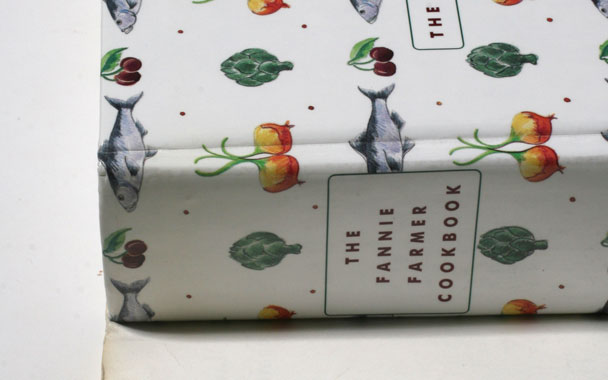If you wanted to sum up the food of my childhood in two words, they would be Fannie Farmer. The spine of my mother's 1946 copy of The Boston Cooking School Cook Book was already split by the time she'd had her fourth child and it naturally fell open to such favorites as scalloped oysters, and creamed dried beef. For my Yankee mother, who was transplanted south to Washington, D.C., Fannie Farmer's cookbook was a lifeline to her New England roots. She cooked the same dishes from the same book her own mother had used. So it was with a fair amount of skepticism that my mother opened a copy of Marion Cunningham's major revision of Fannie Farmer when it came out in 1979. True, some old family standbys (such as Rum Tum Diddy, a cheesy tomato soup concoction spooned over toast) were gone (in rereading the recipe, it's just as well). But the new version was so friendly and easy to read, and so broadly embraced both old and new American classics, that it swiftly replaced the old Fannie as the go-to book in the kitchen. Cunningham revised her Fannie Farmer again in 1990 but my favorite is still the '79 version. I love everything about it: The cover, the end papers (with their handy quick-reference substitutions and tips), the pale cream color of the paper, even the typeface. The voice in the head notes is that of a knowledgeable, passionate home cook—which Marion Cunningham most definitely is. She's as enthusiastic about a club sandwich ("Quite a perfect sandwich, particularly made of newly baked bread freshly toasted with ample slices of breast of chicken and thin slices of tomato") as she is straightforward with insight on roast duck ("For a crisp brown duck, try this recipe: the secret is basting it with water").
Cunningham's Fannie Farmer is within easy reach of the stove in my small apartment kitchen. Although I don't refer to it so much for main dishes—after reading recipes and sampling food in the Gourmet test kitchen all day, I prefer to let loose and wing it at home—I rely on it for simple baking. Whether it's waffles on Sunday morning, cheese drop biscuits to make a soup dinner seem more special, or the date nut bread recipe that I used to successfully wean my daughters off their peanut-butter-and-jelly-and-nothing-else affliction, recipes from the book is omnipresent at my home. I've got a copy at our summer shack in New Hampshire, and page 489 is permanently stained purple from countless batches of blueberry muffins. I've been lucky enough to meet Marion Cunningham several times in the past and, like her cookbook, she radiates a natural ease and grace. In this frenzied age of websites, blogs, and celebrity chefs with their requisite restaurant cookbooks, Cunningham's Fannie Farmer serves as the anchor to my past. My daughters have zero interest in cooking at the moment, but I'll pass Cunningham's Fannie Farmer on to them, anyway. One day they'll be as glad to have it as I am.




 Pinterest
Pinterest


